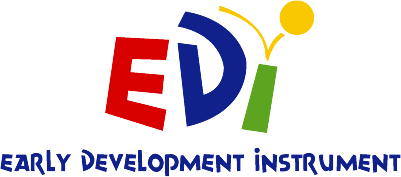A new study from researchers at the University of Manitoba foundfamily risk factors were the driver of language and cognitive development outcomes in kindergarten . Continue reading Family risk factors play big role in language and cognitive development
Category Archives: Latest Reports
New EDI reports focus on Hidalgo-Willacy Counties, Texas
The Hidalgo-Willacy Counties of Texas have released a new EDI report based on data based from over 7,000 kindergarten children. Continue reading New EDI reports focus on Hidalgo-Willacy Counties, Texas
Toronto-based report highlights community uses of EDI results
Toronto region Data Analysis Coordinators (DACs) have released a report documenting how 2010-2011 EDI results were used to inform program planning. Continue reading Toronto-based report highlights community uses of EDI results
2015 Vital Signs reports released
The Community Foundations of Canada and its local partners across the country have released the 2015 Vital Signs reports. Vital Signs is an annual check-up that measures the vitality of cities across Canada by examining significant social and economic trends. Continue reading 2015 Vital Signs reports released
EDI used to measure child outcomes in cohort attending Free Pre-School Year in Ireland
The Early Development Instrument was used as a before-and-after assessment in a sample of 448 children attending Free Pre-School Year in Ireland in 2012/2013. Free Pre-School Year was introduced in Ireland in 2010 and provides a year of free pre-school before children start primary school. A new study published in Irish Educational Studies by Kieran McKeown, Trutz Haase, and Jonathan Pratschke found that children with more or better skills at the beginning of the study period tended to have more or better skills at the end of the study period as well. In addition, the authors found a skill gap between children at the start of the program, and this stayed the same or widened throughout the year. Finally, the authors found that the biggest influence on child outcomes was social class.
Indonesia Early Childhood Education and Development project uses EDI as one measure of program’s impact
The EDI was chosen as one measure to determine the impact the Indonesia Early Childhood Education and Development project had on early achievement gaps. The EDI was used along with the Strengths and Difficulties Questionnaire, tests of executive function, drawing tasks, expressive and receptive language tasks, and demonstrations of child skills to measure child development in 3000 villages in Indonesia. The results of the study were published in the Journal of Development Effectiveness by Haeil Jung and Amer Hasan.
Bilingual instruction for Spanish-speaking children may be more effective
The Journal of Multilingual Education Research has published a new article using EDI data titled Ready for La Escuela: School Readiness and the Languages of Instruction in Kindergarten by Zoila Tazi. The paper uses EDI mean domain scores and percentage of children “very on track” in a New York school district to determine whether bilingual instruction for Spanish-speaking children was a more effective approach than solely English instruction.
Early English-proficiency predicts later language and literacy skills
A new study from Australia using national AEDC data has investigated whether English-proficiency at 4-5 years of age later predicts language and literacy skills at 10-11 years of age. The study was authored by Kamelia Dennaoui, Ruth Jane Nicholls, Meredith O’Connor, Joanne Tarasuik, Amanda Kvalsvig, and Sharon Goldfeld. The authors found that bilingual children who begin school without English proficiency are at an increased risk for later language and literacy difficulties.
Please visit Informa Healthcare to view the abstract.
5 minute Apgar score related to EDI vulnerability 5 years later
A population-based, retrospective cohort study conducted in Manitoba has examined the relationship between the 5 minute Apgar score, a measure of newborn children’s health status, and developmental vulnerability at 5 years of age based on the EDI. The authors of the study include Neda Razaz, W. Thomaas Boyce, Marni Brownell, Douglas Jutte, Helen Tremlett, Ruth Ann Marrie, and K.S. Joseph. The authors found that the risk of developmental vulnerability at 5 years is inversely related with the 5 minute Apgar score, meaning the score can serve as an early population-level measure of developmental risk.
The article, published in the ADC Fetal & Neonatal edition, has an abstract available online.
Many Australian children in need lack access to SLPs
Jane Margaret McCormack and Sarah Elizabeth Verdon have published a paper mapping AEDC vulnerability against the location of paediatric speech-language pathologists (SLP) across Australia. The study, published in the International Journal of Speech-Language Pathology, found many children vulnerable in the Language and Cognitive Development and Communication Skills and General Knowledge domains did not have access to a SLP. The study raises important questions about how best to deliver needed services.
Informa Healthcare has the abstract available to view online.

